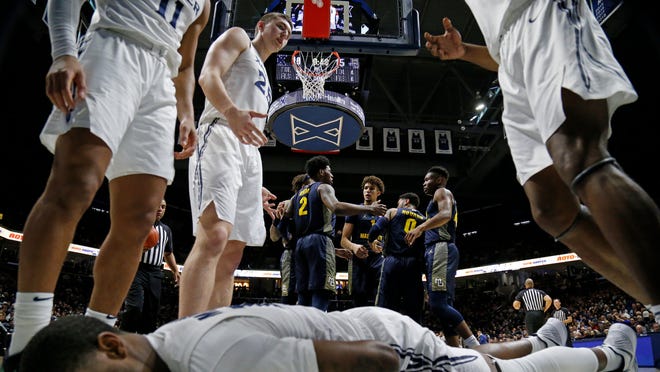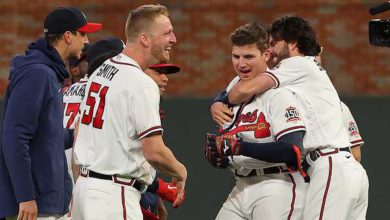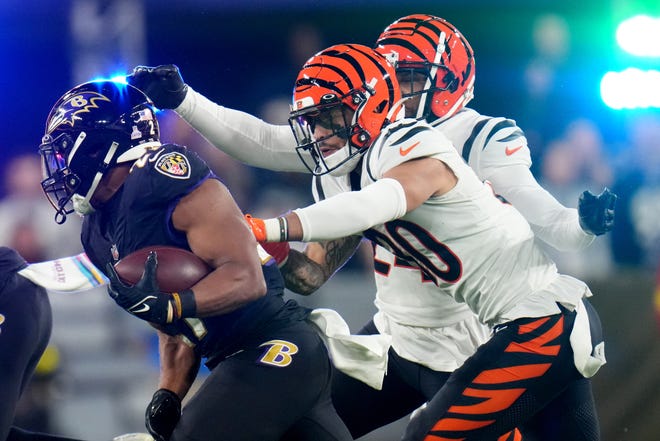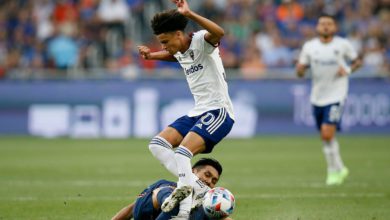

After the Miami Marlins were eliminated in the second round of the postseason by the Atlanta Braves, manager Don Mattingly watched a lot of playoff games in the following rounds.
He wasn’t a fan of the current style of the game.
“Quite honestly, it was a little hard to watch,” Mattingly said at the league’s virtual winter meetings. “There’s just nothing going on. Innings go fast. Strikeout, strikeout, home run. It was hard to watch. It tells me that we have got to find a way to make our game move. I don’t mean play faster games; I mean more action. I think that’s the way that we can create a better game to watch.”
There are a lot of baseball fans who probably agree with his sentiment. Batting averages and on-base percentages are down across the league. Strikeouts and home runs are up. One of the three true outcomes – a walk, homer or strikeout – occurred 36% of the time last season, according to ESPN, which is an all-time high.
MLB commissioner Rob Manfred has emphasized measures to improve the pace-of-play in games – the average nine-inning game was 3:07 last year – and he told the Dan Patrick Show in October that restricting extreme defensive shifts was a hot topic with the league’s competition committee.
More:How will the up-and-down 2020 Cincinnati Reds' season be remembered?
“We’ve got to continue to be progressive,” Mattingly said. “We have to continue to put a product out there that people want to see, that has action and it continues to hold our attention. Anything that we’re doing as far as rules, I think we have to be open-minded. I watch it in the NFL, the rules change. You watch it in the NBA. The games are going to evolve. Obviously, you don’t want to change the core of the game, but I think we have to be open-minded.”

Statcast defines a defensive shift when three or more infielders are on the same side of second base. Left-handed hitters were shifted in 50.8% of their plate appearances in 2020, a number that continues to rise each year. Lefties were shifted in 29.6% of their plate appearances in 2018.
“There’s a real squeeze going on, not just as a left-handed hitter, but I’ll speak for left-handed hitters, at the plate,” Joey Votto told MLB Network Radio on Sirius XM. “The combination of a lot of defenders on the right side of the field and the way a hitter is being pitched now is basically all built into either strikeout or weak contact on the right side of the field. I fell victim to that. Even when I would pop a ball hard and hit it to the right-field grass, it was one-hop to the second baseman or a line drive to the shortstop or second baseman. I felt like no matter what I was doing it was an out.”
With fewer hits through the right side of the infield, it’s led to many left-handed hitters focusing on hitting homers to right field to combat defensive shifts. Votto noted how players like Bryce Harper, Cody Bellinger, Max Muncy and Anthony Rizzo can hit a ball with a 112-mph exit velocity and it’s a routine out because of the second baseman in shallow right field.
“That was a base hit automatic not three, four years ago, not even that long ago,” Votto said. “I would guess, of course, they’re always trying to hit the ball hard, but I think we have a tendency – I can speak from my experience – to try to chase hitting the ball with some height. A ground ball off the bat, even top-spin hard line drives are bad right now. If they change the rules, fine. That means the left-handed hitters will be better equipped for the next era. I wouldn’t be surprised if you saw a guy hit .370 or something crazy like that even with the strikeouts.”
That’s not to say restricting shifts in a universally popular idea. Cleveland manager Terry Francona thought it could have unintended consequences.
“If you artificially put in rules like no shifting, players aren’t going to try to hit the ball the other way," Francona said. "They don’t have to because you can’t shift. They’re just going to reach back for more and everybody is going to pull the ball. I think the best way is when players make adjustments. One thing we need to do better as an industry is make people understand just how much we love our game and enjoy our game, and not just pick apart the things we don’t like in our game. I don’t think we always do that really well.”
There are more radical changes being considered to invite more action into games, ranging from moving the mound backward, deadening the ball or shrinking the strike zone.
More:Jacob Hurtubise pauses military service to chase baseball dream with Cincinnati Reds
“What do I think about the game currently? I’m fond of it,” Votto said. “I’m fond of it because I think it’s a better version of athletes than the ones when I came up. I’m not going to poo-poo on the generation before me. I feel really grateful to have come up after the steroid era. I got to bridge the last few players of the steroid era and then the kind of middle era where I felt like there was a lot of older guys kind of lingering, longer-tenured guys and now what I feel like is this newer generation where truly these are the best athletes I’ve ever seen in a Major League uniforms.
“I mean I watch Ronald Acuña, and he’s probably one of the guys that I would watch the most. He’s such a fabulous athlete to watch. And I don’t know how many of those – if any of those – I got to see when I first came up. For me, if you stand next to these guys or you get to go to a ballpark and sit in a first section and really watch an Acuña fly around the bases or watch a (Mike) Trout at-bat, and then see them run on the field and see how big these men are and how young and healthy they are, it’s really such a treat. I’m proud and honored to be on the field competing with these guys because there are just so many fantastic athletes right now, so I think the sport is in a great place.”
Source link








